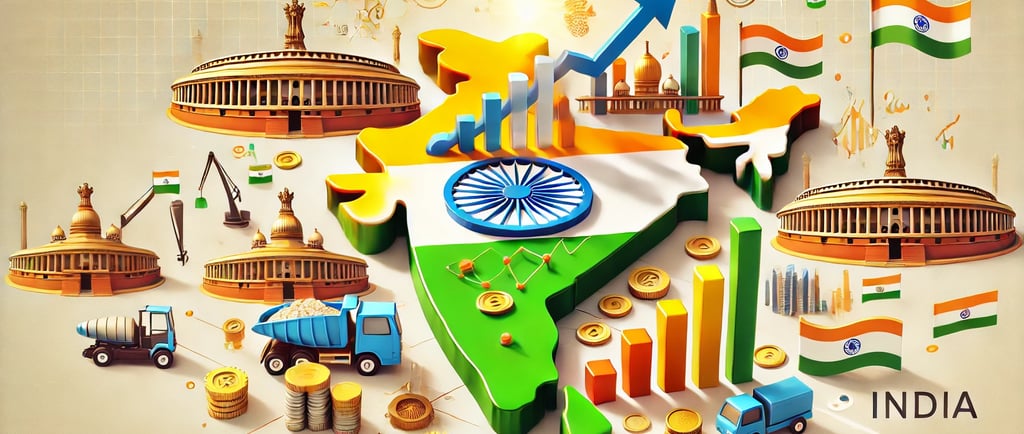Revitalizing Growth: An Insight into India's New Economic Strategies
India's Economic Revival in Motion as Prime Minister Narendra Modi's administration takes proactive steps to boost the economy, strategies like tax reductions and tariff cuts are on the table to stimulate growth. This move signals optimism for stronger financial health and industrial growth across the nation.
POLITICS


Introduction to India's Economic Revisions
In response to the challenging economic landscape that has emerged in recent years, the Indian government, under the leadership of Prime Minister Narendra Modi, is undertaking a significant overhaul of its economic strategies. These revisions aim to address the slowdown in the economy by implementing measures designed to stimulate growth and enhance investor confidence.
Strategies for Economic Stimulation
Among the primary strategies being considered by the Narendra Modi administration are tax reductions and tariff cuts. These measures are intended to alleviate the financial burden on businesses and consumers alike, thereby encouraging spending and investment. By lowering taxes, the government hopes to increase disposable income, which can lead to greater consumer demand and ultimately drive economic activity.
Additionally, the proposed tariff cuts are aimed at fostering a more favorable environment for both domestic and foreign companies. Reducing tariffs could lower the cost of imported raw materials and goods, translating to lower prices for consumers and improved margins for businesses. This, in turn, can incentivize companies to invest in growth initiatives, creating jobs and further stimulating the economy.
Potential Outcomes and Challenges
While the government's new economic strategies offer a promising approach to address the current economic slowdown, there are inherent challenges that must be navigated. The success of tax reductions and tariff cuts will largely depend on global economic conditions, as well as the responsiveness of markets to these changes. Moreover, the government must ensure that such measures do not negatively impact fiscal stability in the long run.
In summary, Prime Minister Narendra Modi's administration is actively revising its economic playbook in a bid to combat the slowing economy. By introducing tax cuts and tariff reductions, the government seeks to create a robust environment for economic growth. The anticipated outcomes rely heavily on various external factors, but with carefully executed strategies, these revisions could mark a significant turning point toward revitalization.
